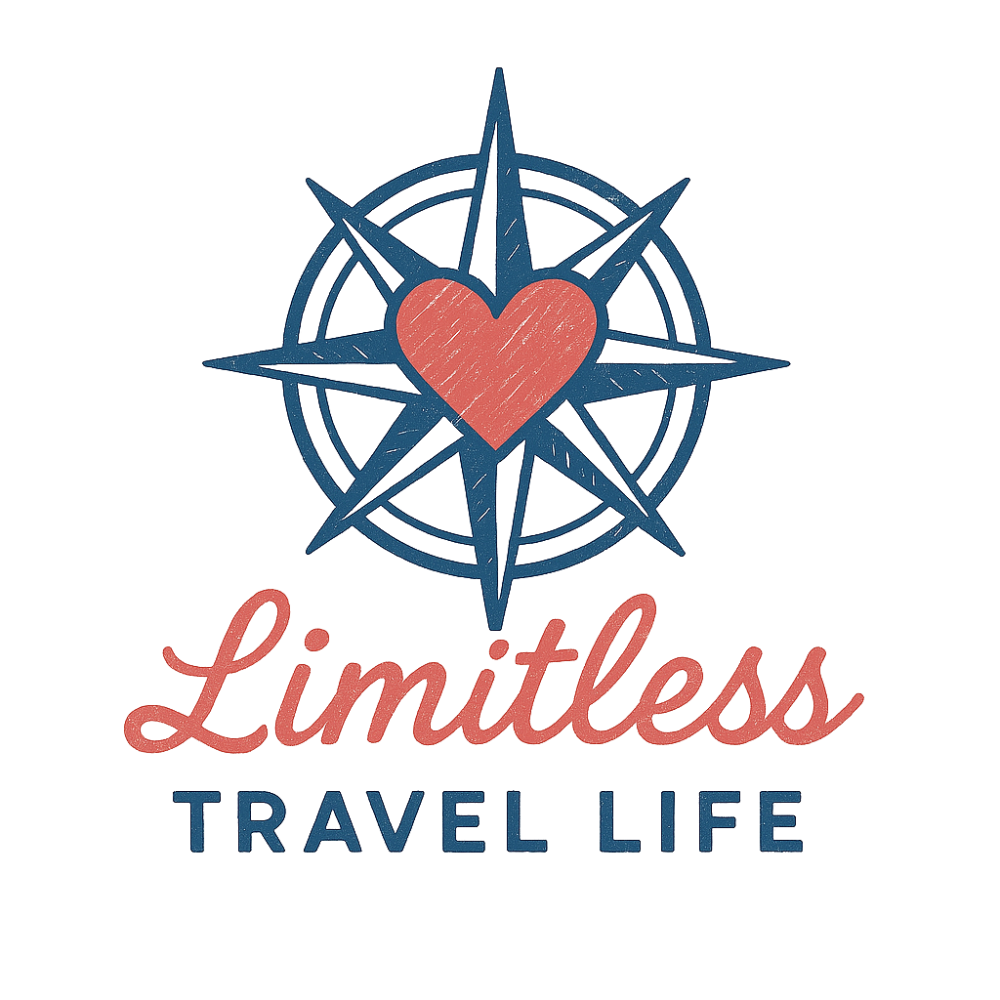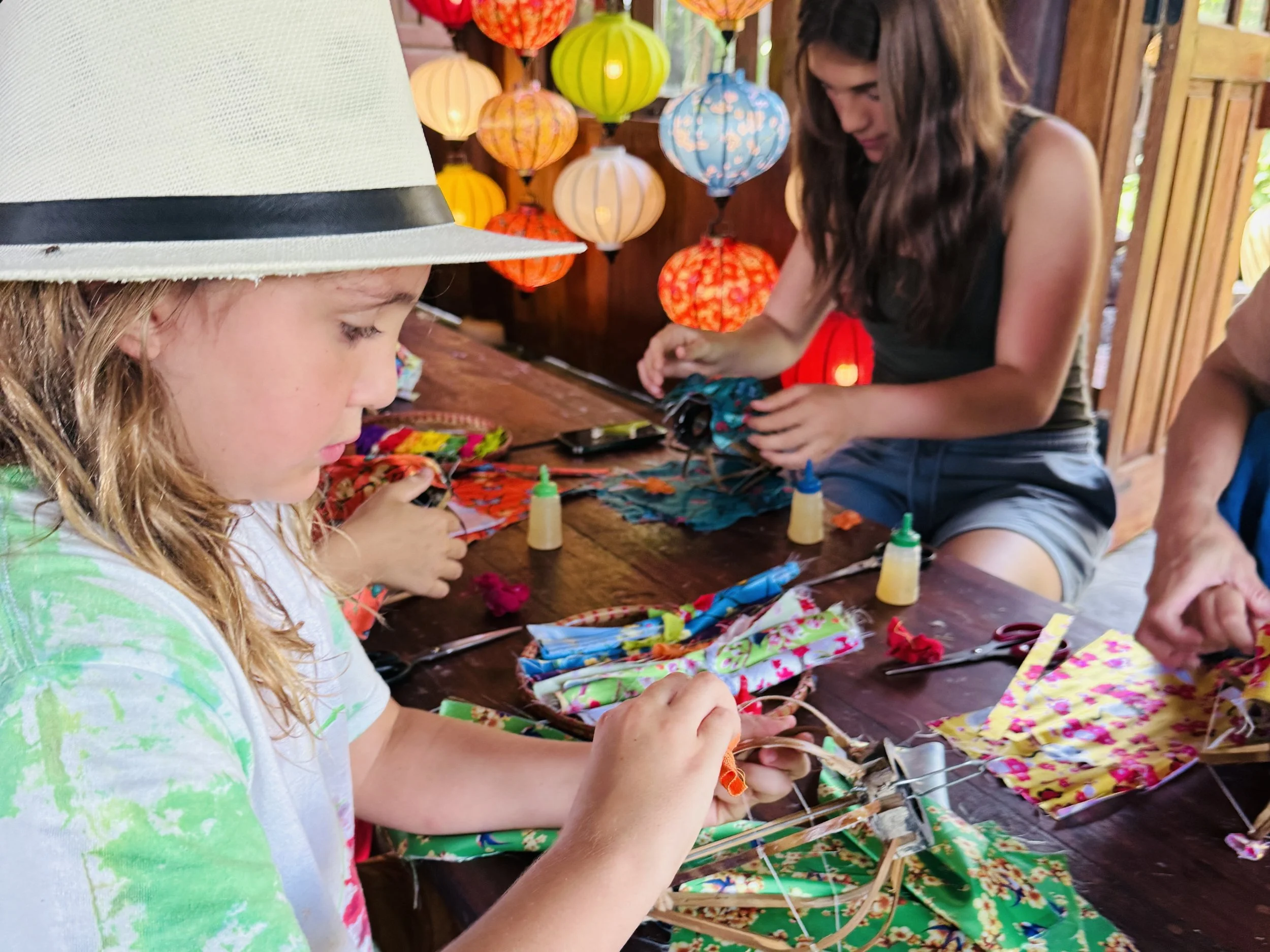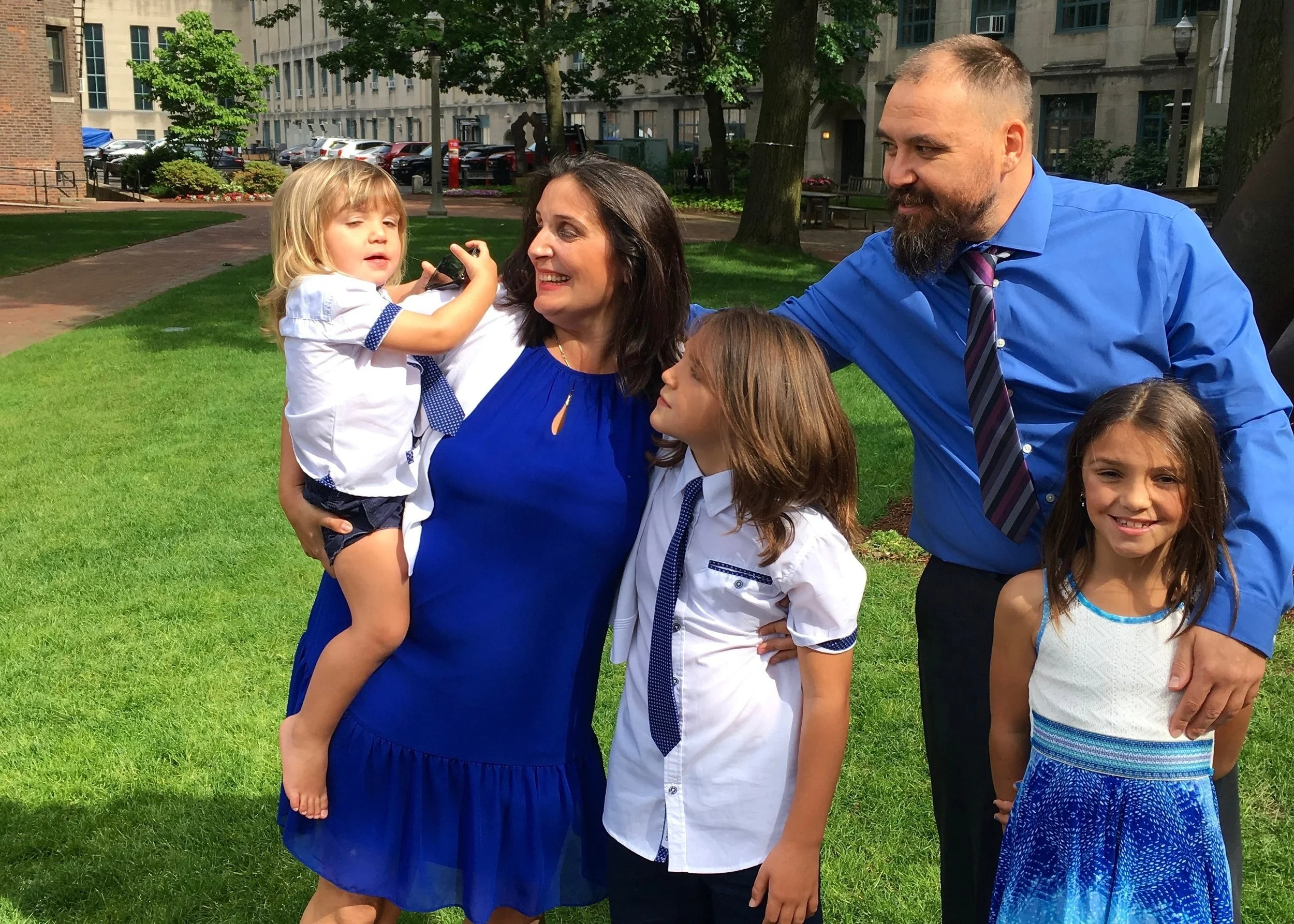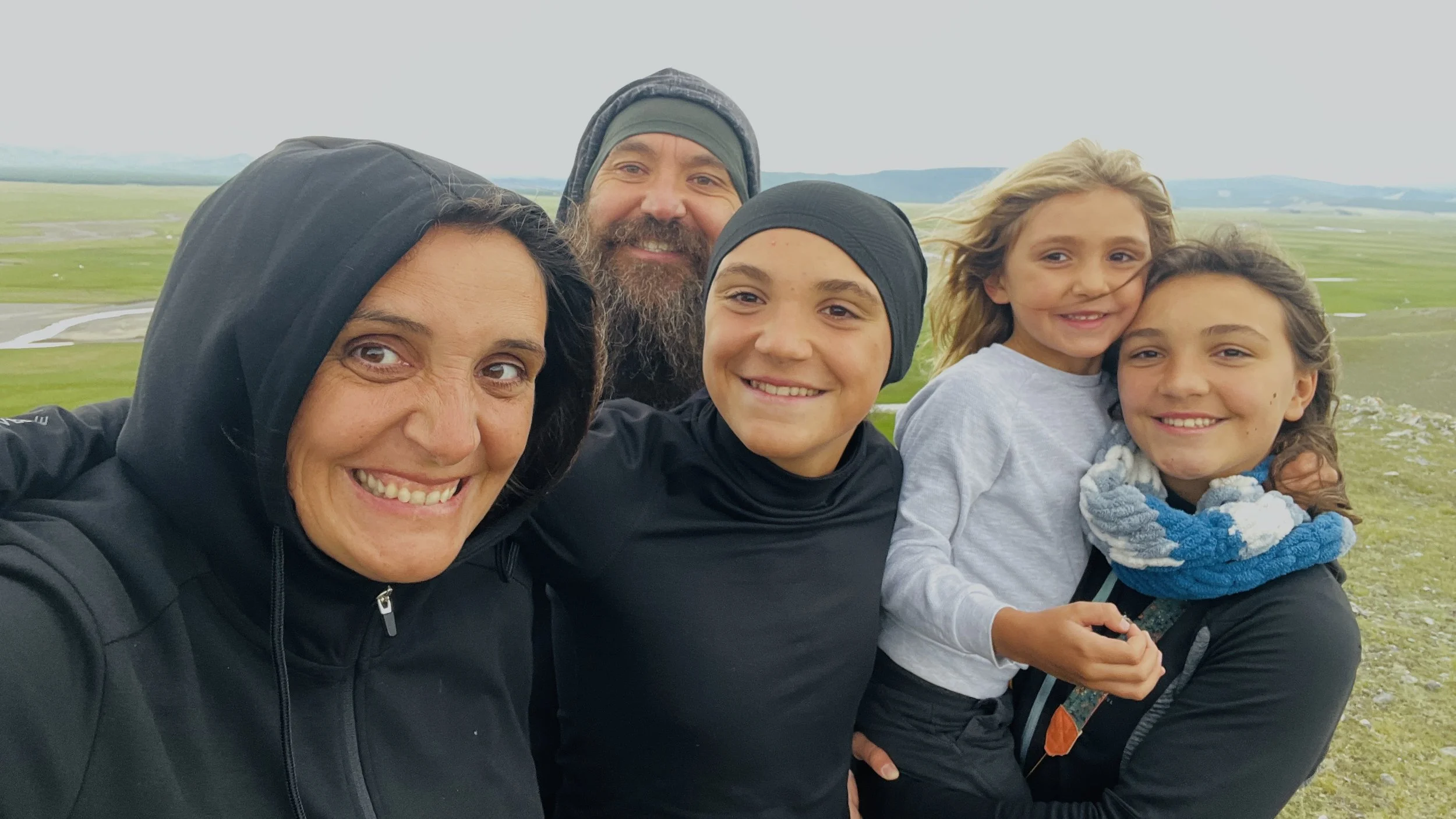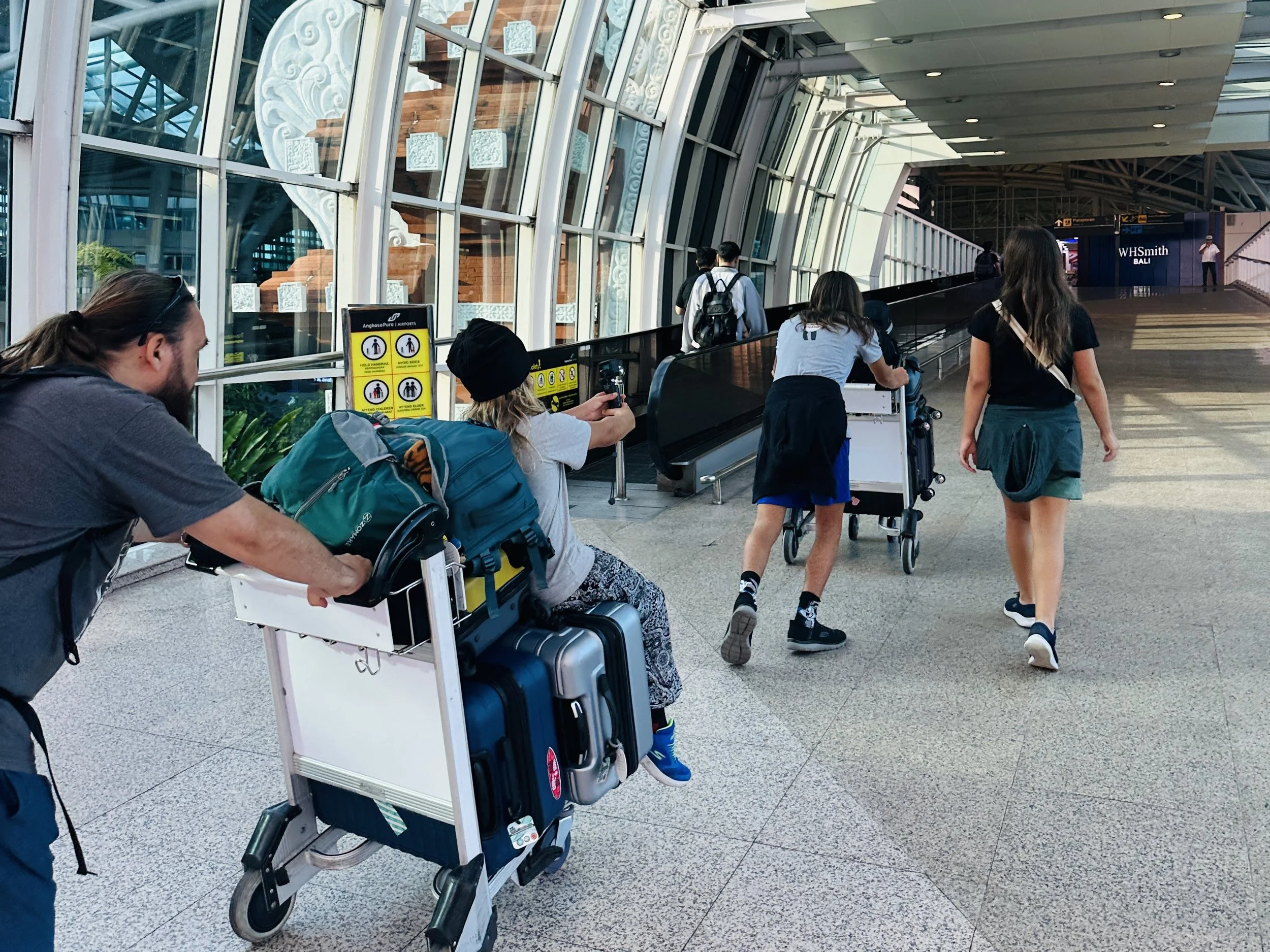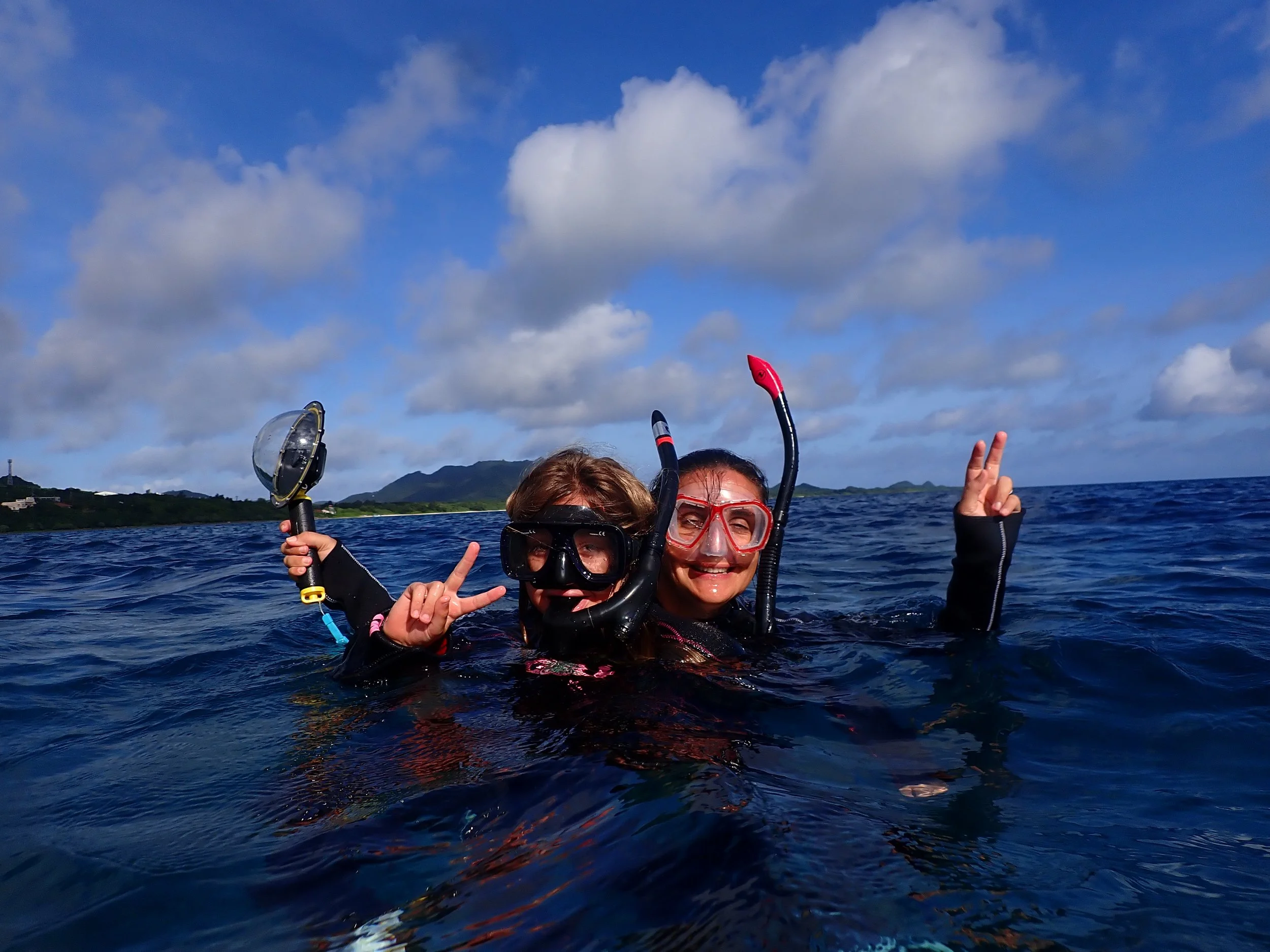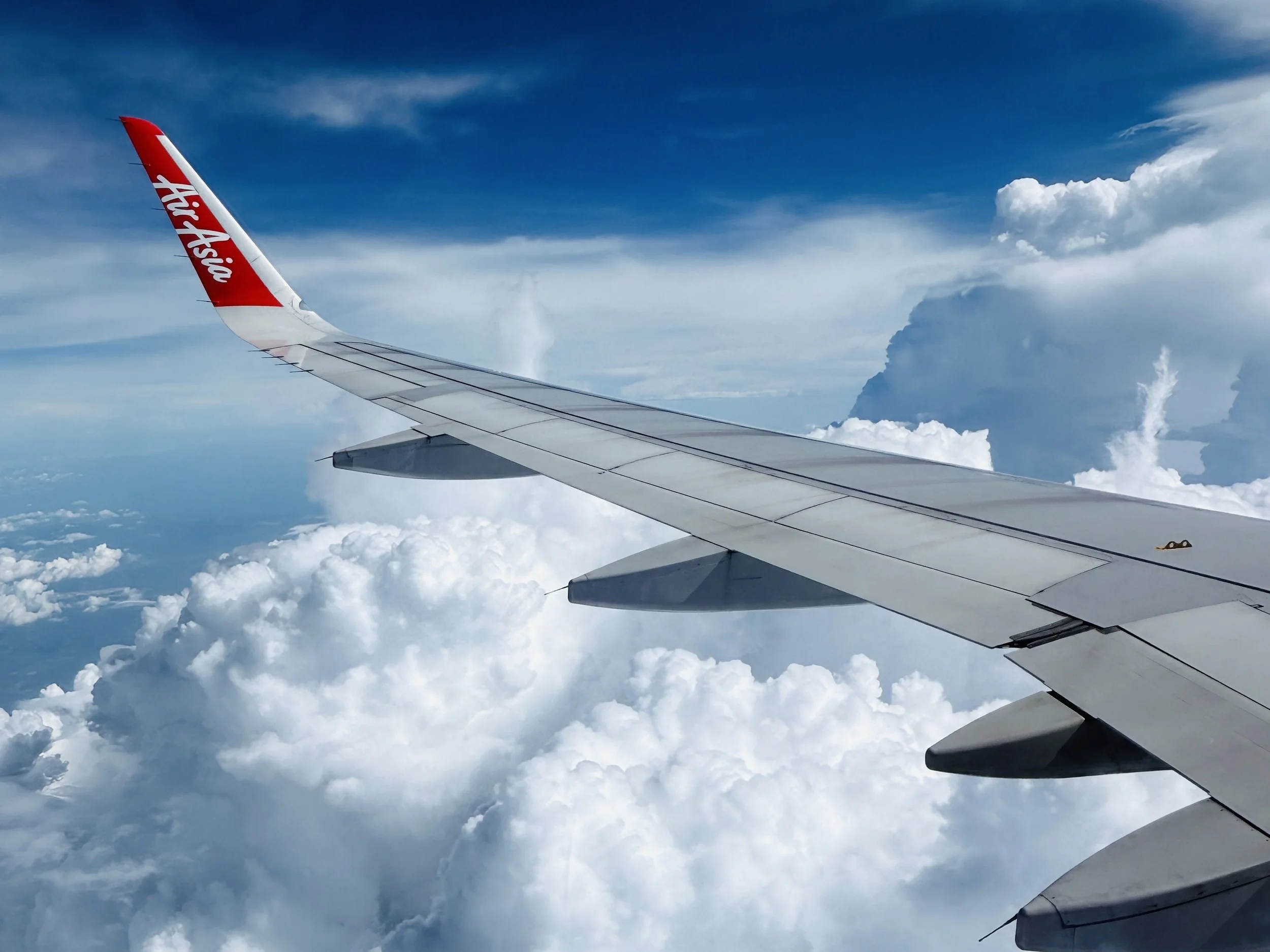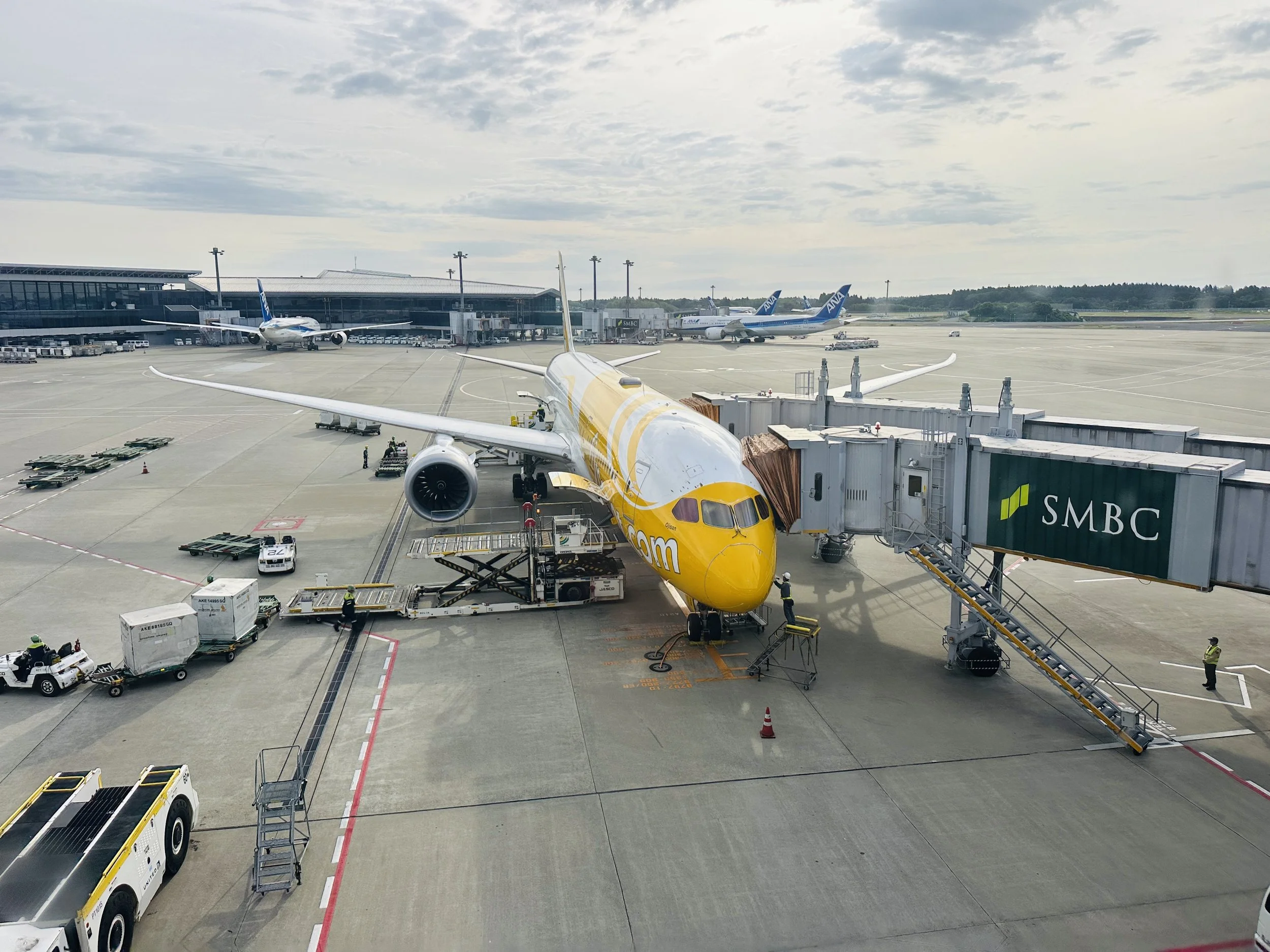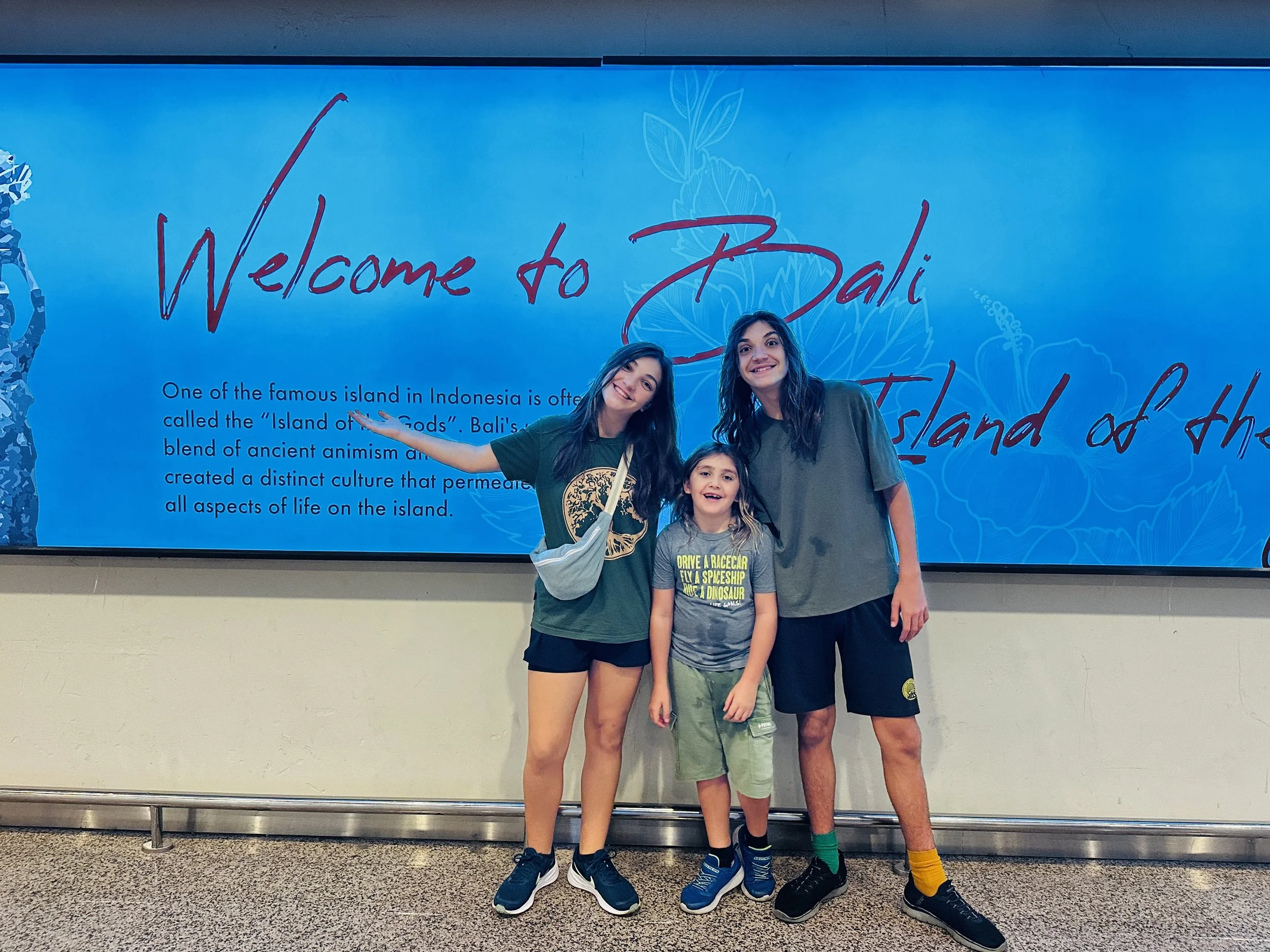Why We Prioritize Experiences Over Destinations (And How You Can Too)
After years of full-time family travel, we’ve discovered that the real magic doesn’t come from checking off landmarks; it comes from the experiences that connect us to the people, culture, and spirit of a place. From cooking Khmer curry in Cambodia to drifting along the Mekong in a sampan boat, it’s these immersive moments that have shaped our journey the most. In this post, I’m sharing how shifting our focus from destinations to experiences transformed our travels and how it can do the same for yours.
Let’s be honest...
Most travelers plan their trips around a place:
“We’re going to Paris!”
“Let’s see Machu Picchu!”
“Tokyo is on our bucket list!”
But after years of full-time travel as a family, we’ve learned that the true magic doesn’t come from checking off destinations.
It comes from what you do when you’re there.
From making fresh spring rolls in Cambodia to sandboarding in the Peruvian desert, our most memorable moments come from experiences that connect us to people, culture, and nature, not from landmarks.
Here’s why we’ve shifted from chasing places to seeking experiences and how that simple mindset change has transformed our travels.
Dune surfing in Huacachina, Peru
1. It Started With One Unexpected Moment
When we first started traveling full-time, I had a checklist packed with famous sites we had to see. We rushed through museums, monuments, and “top 10” attractions, trying to squeeze in as much as possible.
Then the pandemic hit, and we found ourselves stuck in Nepal. During that unexpected pause, something shifted. We had the chance to interview a local artist for our YouTube channel (AMAR SHAKYA, PAUBHA ARTIST in Nepal. People we meet), and in the process, he offered to teach our kids his artistic techniques. A few days later, we also interviewed our hosts, who gave us a place to stay for a reasonable price the night before Nepal went into lockdown (COSY NEPAL in PATAN, Nepal. People we meet), and that’s when everything changed.
That’s where we found a real connection.
That’s where we discovered the true inspiration behind our travels.
It wasn’t about checking off landmarks anymore.
It was about slowing down and connecting, on a deeper, more meaningful level, with the people and culture around us.
That was our turning point. We realized the moments we remember most aren’t the biggest or most famous, they’re the ones where we engage, share, and genuinely feel where we are.
2. Cambodia: From Street Food to Circus Magic
Let me give you a more recent example. When we visited Cambodia a few months ago, we naturally marveled at Angkor Wat and spent time exploring the temples.
But what we really remember is making Khmer curry together during a local cooking class in Siem Reap. After picking up our ingredients at the local market, we were welcomed into a small open-air kitchen. Our teacher showed us how to grind spices by hand, cook over an open fire, and finish our dishes with delicate banana leaf flowers.
The kids were so proud of what they made, especially Luca, who almost burned himself while enthusiastically stirring the meat in the pan. Despite the near mishap, we all finished every bite with big smiles.
That evening, we attended the Phare Circus, an incredible performance blending storytelling, acrobatics, and music. What made it truly unforgettable was learning that the performers were all young people from disadvantaged backgrounds, trained through a social arts school. The show wasn’t just entertaining, it was profoundly moving. I found a ticket option on Viator that allowed us to go behind the scenes, and it gave all of us a much greater appreciation for the effort, passion, and dedication these artists pour into their craft. It left a lasting impression on every one of us.
A beautiful moment also occurred backstage. As we watched the artists prepare, Mass noticed a therapist massaging one of the performers who seemed to be in pain. With his background in physical therapy, he offered to help. The therapist welcomed his support, and within minutes, the artist began to feel better. Soon, more performers began lining up for a quick check-up from Mass. It turned into a spontaneous collaboration, and what struck us most was how open and grateful everyone was. The therapist didn’t feel threatened; she just felt relieved to have extra help healing her team. That moment revealed a great deal about the values of this culture: community, humility, and care for one another, without ego or competition.
Those two experiences, cooking and the circus, offered more cultural understanding than any guidebook or history tour ever could.
And while we found these activities online (some through Viator, others through local tips), what mattered most wasn’t how we booked them, but how they made us feel.
Phare Circus group shot in Siem Reap, Cambodia
3. Vietnam: Lanterns, Sampans, and Slow Moments
Vietnam gave us so many sensory memories: the scent of fresh herbs, the buzz of scooters weaving through the streets, and the warmth of the people everywhere we went. But two experiences stood out above the rest.
In the charming town of Hoi An, we took part in a traditional lantern-making workshop. Surrounded by silk fabric, bamboo frames, and excited chatter, our kids created their lanterns from scratch. The process was calming and almost meditative. We carefully glued the fabric, bent the frames, and chose colors that reflected our personalities.
The kids were entirely focused, and by the end, each of them proudly held a handmade lantern, a small piece of Vietnam that we had shaped with our own hands, and was coming home with us.
Later in the trip, we headed south to the Mekong Delta, where we climbed into a small wooden sampan boat, made home for a few nights, and quietly glided through narrow canals. Everything slowed down. The only sounds were the gentle rhythm of the river, children splashing and laughing in the water, and the occasional passing boat loaded with rice, fish, or bricks, products of life lived along the riverbanks.
It was peaceful, even for our kids, who usually aren’t fans of “slow.” But something about being rocked by the current and witnessing everyday life along the Mekong calmed us all. There was no rush, no loud noise, just stillness, simplicity, and presence.
That boat ride wasn’t thrilling in the typical sense, but it offered us a quiet, powerful connection to the land and the people, a connection that’s hard to put into words and impossible to forget.
These two moments, crafting lanterns and drifting through the Mekong, reminded us just how powerful simple, hands-on experiences can be. They slowed us down and pulled us into the heart of Vietnamese culture in a way that no big-city tour ever could.
5. What Happens When You Travel for the Experience
When we focus on doing rather than just seeing, something shifts:
We connect with the people who live there
We learn about daily life, culture, and values in a hands-on way
We remember the trip more vividly and longer.
Our kids stay engaged because they’re part of the action
We return home changed, not just rested.
6. How to Start Prioritizing Experiences Over Destinations
You don’t have to overhaul your entire travel style; shift your focus a bit. Here’s how:
🧭 Ask Different Questions
Instead of: What’s the top place to visit in this country?
Ask: What do we want to experience, feel, or learn while we’re here?🔍 Look for Local-Led Opportunities
Cooking classes, artisan workshops, food walks, farm visits, and storytelling events all offer a glimpse into real life.
We often use a combination of online platforms (such as Viator or GetYourGuide), local Facebook groups, and personal recommendations to find these.
👨👩👧👦 Let the Kids Pick
Ask your kids what they want to try: climbing, dancing, building, painting, eating, and let their curiosity lead.
⏳ Leave Room for Discovery
Don’t overbook every day. Some of our best experiences happened when we slowed down or had “open” afternoons.
7. But What About the Famous Stuff?
Of course, we still visit famous places! We’ve stood in awe at the Taj Mahal, explored the temples of Angkor Wat, and even gone up the Eiffel Tower, twice!
But instead of racing through 10 sites in 3 days, we choose fewer places and go deeper.
When we visit iconic landmarks, we look for ways to make the experience more personal and meaningful. That might mean:
Hiring a local guide to share stories and history beyond the surface
Booking an experience that helps us better understand the local culture
Letting the kids engage in their way, through questions, photos, video, or simply quiet observation
These small shifts turn famous sights into lasting memories.
They’re no longer just photos in a camera roll, they become part of our shared story.
8. Why This Matters (Especially for Families)
When traveling with kids, attention spans, energy levels, and moods are crucial.
They’re not likely to remember a monument, but they will remember making something, tasting something, or talking to someone.
Experience-first travel:
Builds empathy
Sparks curiosity
Strengthens family bonds
Feels more human
It’s not just about what you see. It’s about what you feel together.
9. What I’ve Learned from Planning Our Adventures
After traveling full-time since 2018, I’ve had my fair share of trial and error when it comes to planning meaningful trips for our family. I’ve learned that it’s not just about where you go, it’s how you experience it. And honestly, the most memorable moments usually aren’t the ones that take the most planning, they’re the ones that feel the most authentic.
Over time, I’ve found a rhythm in how I research and choose activities. I start by thinking about what we’re curious about, what could help us understand the place, or connect with the people who live there. Then I look for experiences that feel aligned with that, whether it’s a cooking class, a street food tour, a hands-on workshop, or a slow boat ride through nature.
I’ve also learned to balance cultural exploration with fun and downtime, especially when spending time with kids. When I find something that works well for us, I love sharing it with other families who are trying to create their meaningful adventures.
Lately, I’ve discovered many great experiences through Viator; it’s been a helpful resource for finding locally led activities that are easy to book, especially in unfamiliar places. But no matter how we see them, it’s the feeling they give us that matters most.
If you’re trying to plan something that goes beyond the typical tourist trail, know that you don’t have to overcomplicate it. Start with curiosity, leave room for spontaneity, and let connection lead the way.
Final Thoughts
Where you go does matter, but what you do while you’re there matters even more.
Traveling for experiences doesn’t mean skipping the Eiffel Tower or Machu Picchu.
It means slowing down, asking questions, meeting people, and finding the joy in the little things.
So next time you plan a trip, ask yourself:
👉 What experience do I want to come home remembering?
Chances are, it won’t be a selfie in front of a monument; it’ll be the moment your kids tried something new, or the conversation you had over a meal you helped cook together.
Let those be the moments that define your travels.
Why I Started My Travel Business (And How It Can Help Families Like Yours)
After years of traveling the world full-time with my husband and three kids, I decided to turn our experience into something bigger, a way to help other families create unforgettable adventures of their own. In this post, I share the story behind Limitless Travel Life, why I started this travel business, and how I support families who dream of traveling differently, whether for a few weeks or a whole lifestyle shift.
In 2018, we made a life-changing decision: we left behind the predictable rhythm of everyday life to travel the world full-time as a family of five.
It wasn’t a decision we made lightly, but deep down, we knew we were craving something more, more connection, more learning, more life.
We packed what mattered, let go of what didn’t, and flew to Bali. It was our first step into a lifestyle that would challenge us, change us, and ultimately shape who we are today.
At the time, we had no intention of making this a business. We just wanted to experience the world together. But as we continued to travel across continents, cultures, and seasons of life, something beautiful started to unfold.
The World Became Our Classroom
One of the most beautiful shifts that came with full-time travel was in the way our kids learned. We didn’t just take them out of school, we took them into the world. We didn’t have a set curriculum or perfect plan, but somehow, everything became a lesson.
They learned history while walking through ancient ruins in Italy, Turkey, Egypt, and other locations. Geography came alive through train rides in Mongolia, hiking in New Zealand, and many other places around the world. Biology was explored while snorkeling in Bali or spotting orangutans in Borneo. They met people who spoke different languages, ate food they’d never tried before, and slowly, their worldview expanded, and so did ours.
This approach, often referred to as worldschooling, isn’t about recreating school on the road. It’s about embracing curiosity, following interests, and letting life itself become the classroom. It’s messy and magical all at once. And it’s one of the things I cherish most about this journey.
“How Do You Do It?”
As we traveled, we began sharing our story online through our blog, The 5 World Explorers, and our YouTube Vlog. We weren’t trying to become anything; we just wanted to document the adventure so our kids would always have it as a memory and stay connected to friends and family. But over time, our inbox began filling with messages:
“How do you plan all of this?”
“What do you do about education?”
“Is this doable with kids?”
“Can you help me plan a trip like this?”
These weren’t people looking for luxury resorts. They were parents like us, curious, maybe a little overwhelmed, but deeply craving something different for their families.
Initially, I answered questions sporadically. Then came video calls. Then came helping others plan their first big trips.
That’s when I realized something: this wasn’t just our story anymore. I could help others write theirs.
A Business Rooted in Experience
That’s how Limitless Travel Life came to be, not as a business plan, but as a natural extension of what we were already doing.
I didn’t set out to become a travel advisor. I just knew what it felt like to want more out of life, and to wonder if it was possible with kids in tow. I had learned a great deal about logistics, planning, slow travel, packing light, and making a new place feel like home, and I wanted to share this knowledge with others in a meaningful way.
This isn’t a big agency. I don’t do flashy group tours or high-end vacation packages. What I offer is real-world insight from someone who has lived this life and continues to live it.
Why I Help Families Travel Differently
Because travel can be more than just a break, it can be a reset, a reconnection, a new way of seeing everything.
It doesn’t have to mean selling everything and leaving for years.
Sometimes, it’s two weeks somewhere unexpected. Sometimes, it’s adding more intention to your next family vacation. Sometimes, it’s simply believing that your family deserves adventure, too.
What I’ve learned and what I try to share is that there isn’t one way to travel. But there is your way. And it’s worth exploring!
💛 Why It Matters
I didn’t start this business to sell trips. I started it because I know how transformative travel can be, especially when shared as a family.
Whether you're curious about worldschooling, overwhelmed by the planning process, or just dreaming of something different, I want to help you take that next step. You don’t need to figure it out alone.
Some families want to explore deeper. Others want to travel smarter. I’m here for both, because there’s no one right way to do this, only your way.
📬 Let’s Connect
If this resonates with you, I’d love to hear from you. I offer a complimentary 20-minute discovery call (which you can book by emailing me at limitlesstravellife@gmail.com) to determine if we’re a good fit, or you can reply with a question.
Your dream family adventure doesn’t need to wait for someday. Let’s start exploring what’s possible together.
With gratitude,
Sarah
Everything You Need to Know About Travel Visas (Before You Book That Flight!)
Visas might not be the most exciting part of planning a trip, but skipping this step can cost you—big time. From tourist and digital nomad visas to what really happens if you overstay (yes, even by a day), this guide covers everything you need to know before crossing any border. Whether you're traveling solo, with kids, or full-time, this is the visa breakdown every traveler should read before booking that flight.
If you're anything like us, a family that has been hopping around the globe since 2018, you've learned that you should never book a trip without checking visa requirements first. It's not the most exciting part of travel planning, but it might be the most crucial.
Visas are one of those things you don't think about until they become a problem.
In this guide, we'll walk you through the different types of visas, where to find the most accurate info, and how to make the application process as smooth as possible. Whether you're a solo backpacker, a traveling family, or a digital nomad, understanding visas is key to keeping your adventure stress-free. Why Checking Visa Requirements Should Be Step #1
Imagine booking flights, accommodations, and activities for your dream destination only to find out at the airport that you can't board because you don't have the proper visa. It happens. More often than you'd think!
Here's why you should always check visa requirements before booking anything:
Avoid unexpected expenses: Emergency visa processing (if even possible) can be costly.
Different rules for different passports: Two travelers going to the same country might need completely different documentation.
Denied entry or boarding: Airlines can and will stop you from boarding without proper entry clearance.
We've seen families in tears at the airport. And we've also had close calls ourselves. Now, it's the very first thing we check when considering a destination.
The Main Types of Travel Visas
Visas are a country's permission to enter, stay, or pass through its territory. But not all visas are the same. Here are the most common ones you might encounter:
1. Tourist Visa
This is the most popular visa type for leisure travel. It allows short stays between 15 and 90 days for sightseeing, visiting friends/family, or relaxing. Some countries require you to apply in advance, while others offer Visa on Arrival or e-Visas.
2. Business Visa
This type is for work-related visits like attending meetings, conferences, or negotiations. It doesn't allow you to work in the country per se, but it covers professional activities that don't involve direct employment.
3. Transit Visa
A transit visa may be required if you're passing through a country en route to another destination and your layover exceeds a specific duration. For example, China and Russia often require transit visas, even if you're not leaving the airport.
4. Student Visa
Planning to enroll in a school or university abroad? You'll need a student visa. These often involve more documentation, like an acceptance letter, proof of financial support, and medical clearance.
5. Work Visa
A work visa is essential if you've secured employment in another country. These vary wildly in duration and requirements, usually involving employer sponsorship.
6. Digital Nomad Visa
This is a relatively new category gaining popularity. Countries like Portugal, Estonia, and Indonesia now offer long-stay visas for remote workers. They usually require proof of income, health insurance, and sometimes tax commitments.
7. Visa on Arrival & e-Visas
Some countries allow travelers to apply and pay for a visa after arrival at the airport. Others offer e-visas, which are completed online before you travel. Both are easier than traditional visas but are not "automatic," so you must check the requirements beforehand.
Where to Find Visa Information
You don't want to risk getting outdated or incorrect information regarding visas. Here's where to look:
✅ Official Government Websites
Always start with the official immigration or consulate page of the country you're visiting. These sites list entry requirements by nationality and often provide step-by-step instructions.
✅ Embassies & Consulates
If you're unsure or dealing with a complicated case (extended stay, unusual passport, etc.), contact the embassy or consulate directly. They are the best authority for up-to-date information.
✅ IATA Travel Centre / Timatic Database
Airlines use the Timatic database to determine whether travelers can board based on their documents. You can access a version of this database through IATA's free TravelCentre.
⚠️ Avoid Relying Solely on Blogs or Forums
Travel blogs (even ours!) can be helpful for personal experiences but never rely on them as your only source. Rules change, and what worked for someone last year may no longer apply.
How to Apply for a Visa: Step-by-Step
Visa applications can range from simple (5-minute online form) to highly complex (interviews, fingerprints, bank statements). Here's a basic roadmap:
Determine the visa type you need
Visit the official website of the country's immigration or consular office
Gather required documents such as:
Passport (with at least 6 months validity)
Passport-sized photos
Flight and hotel bookings or invitation letters
Proof of funds
Travel Insurance
Fill out the application
Pay the fee
Schedule an appointment (if required)
Wait for processing
Tip: Make a folder (both digital and physical) to store your visa-related documents for easy access.
What Happens If You Overstay Your Visa?
Overstaying a visa by a day or a month can lead to serious consequences, varying wildly by country. Some travelers assume it's "no big deal," especially if they're only over by a short time. But that's a risky assumption.
Here are the potential consequences of overstaying your visa:
🛑 Fines
Most countries charge a daily or flat fine if you overstay. For example:
Thailand: 500 baht per day (up to 20,000 baht max)
Indonesia: 1 million rupiah per day
Schengen Area: Country-dependent, often combined with penalties or warnings. It varies widely by country. Here's a general idea:
France: Fines can range from €200–€300 ($215–USD 325)
Germany: Often a warning for a short overstay, but fines can go
up to €1,000 (USD 1,080) in more serious cases
Italy/Spain: Similar range, typically €200–€500 ($215–$540
USD)
🧳 Deportation
You may be detained and deported if authorities catch you during a routine check, airport exit, or hotel registration. Deportation records are serious and can impact future travel.
❌ Travel Bans or Blacklisting
Some countries impose entry bans (from 6 months to 10 years) if you overstay:
The United Arab Emirates and India are known for enforcing bans.
Schengen Zone: A flag on your record can prevent re-entry into any of the 27 Schengen countries.
📉 Impact on Future Visa Applications
When you apply for a visa in the future, many countries ask if you've ever overstayed a visa. If your passport is flagged in their immigration database, it could result in:
Denied applications
Longer processing times
Stricter documentation requirements
⚖️ Legal Proceedings
In rare but severe cases, overstaying can lead to legal charges, especially if combined with working illegally, false documentation, or repeated offenses.
What to Do If You Accidentally Overstay
Life happens. Maybe you miscounted days, got sick, or had a flight canceled. If you realize you've overstayed (or are about to):
Contact immigration: Visit a local immigration office and explain your situation. Voluntary disclosure often leads to leniency.
Be honest: Never lie to authorities about your stay or intentions.
Pay any fines: Settle your dues immediately and ask for official proof that you've done so.
Get permission to leave: In some countries, you'll need an exit visa or clearance to depart without further penalties.
The bottom line is to respect visa limits as strictly as flight times. It's not just about the current trip; it's about protecting your ability to travel freely in the future.
Tips to Make the Process Smoother
Here's our go-to checklist to avoid stress:
✅ Start early. Some visas take weeks to process.
✅ Check return ticket requirements. Some countries won't let you in without proof of onward travel.
✅ Verify passport expiration. Must often be valid for 6+ months beyond your stay.
✅ Print documents. Many immigration officers still want paper copies.
✅ Stay updated. Rules change frequently.
❌ Avoid scams. Stick to official websites or trusted third-party services.
Special Notes for Families and Frequent Travelers
✈️ Traveling with Kids
Bring birth certificates or notarized consent letters when one parent travels solo.
Make sure accommodation and tickets include all names.
🔁 Multiple-Entry or Long-Term Visas
It's ideal if you're bouncing between countries or staying in a region for a while.
💼 Visa Services
Agencies help simplify the process but always verify they are legit.
Final Thoughts: Stay Flexible, Stay Informed
Visa rules are one of the most dynamic aspects of travel. They change based on politics, global health events, and international relations.
You might have visited a country visa-free country last year and suddenly found new rules in place this year. Always double-check, even for familiar destinations.
Here are some tools we use to stay in the loop:
Embassy alert subscriptions
Reddit and Facebook expat groups
Smart Traveler Enrollment Program (STEP) for U.S. citizens
Mobile apps like Sherpa, Atlys, or Passport Index
Bonus: Countries with Easiest Entry for Most Passports (As of 2025)
Looking for stress-free destinations? These countries generally offer visa-free or e-visa access to many nationalities:
Thailand
Indonesia
Mexico
Georgia
Turkey
Colombia
Portugal
Kenya
Always confirm based on your specific nationality.
Visas might not be glamorous, but they're essential. With some prep, you can avoid unnecessary stress, fines, or missing out on your travel adventure altogether. A few clicks today can save you a world of trouble tomorrow.
Do you have a visa story or resource to share? Comment below or message us; we're all learning together.
